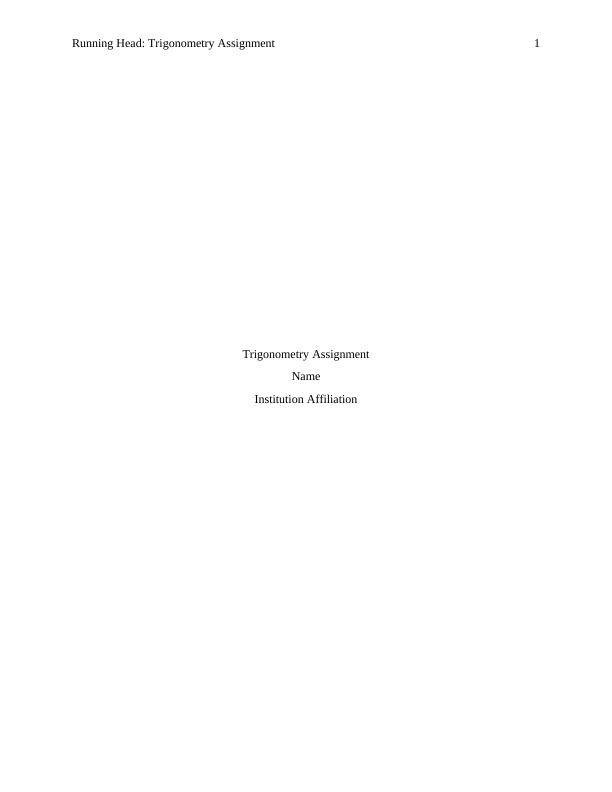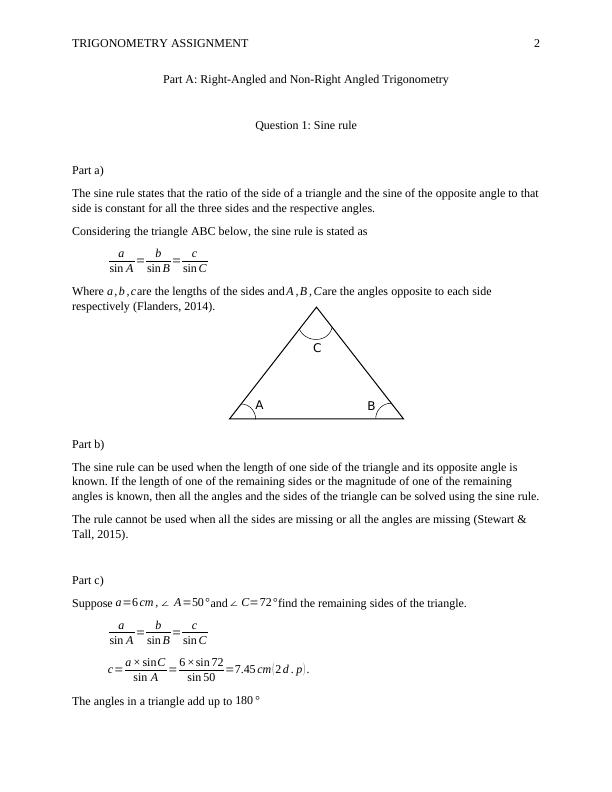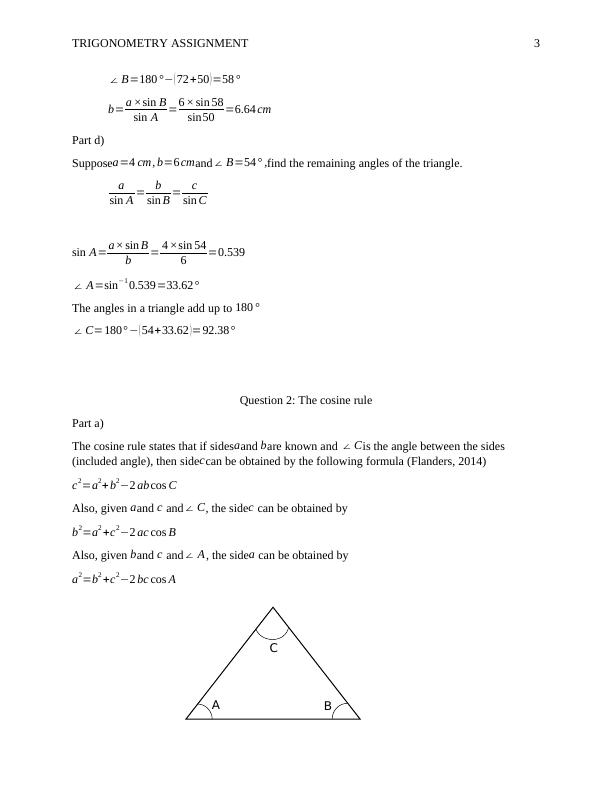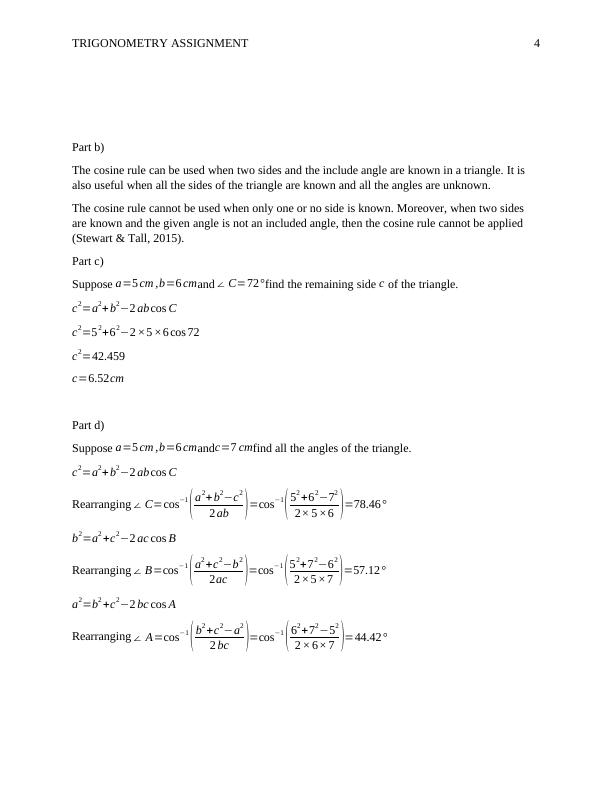Trigonometry Assignment
Added on 2023-01-11
12 Pages1666 Words22 Views
End of preview
Want to access all the pages? Upload your documents or become a member.
Assessment 6.02b: Applying the Laws of Sines and Cosines..
|3
|449
|52
Trigonometry Basics: Sine, Cosine, Tangent, Laws, and Formulas
|28
|863
|91
The sum total of angles in a triangle is 1800.
|5
|217
|33
Trigonometry in Right Angled Triangles
|14
|1850
|78
Trigonometric Methods for HNC/HND Electrical and Electronic Engineering
|16
|2237
|338
Ladder Heights, Trigonometric Graphs, Resultant Forces, and Volume Calculations: Summary of Given Data
|10
|609
|447



